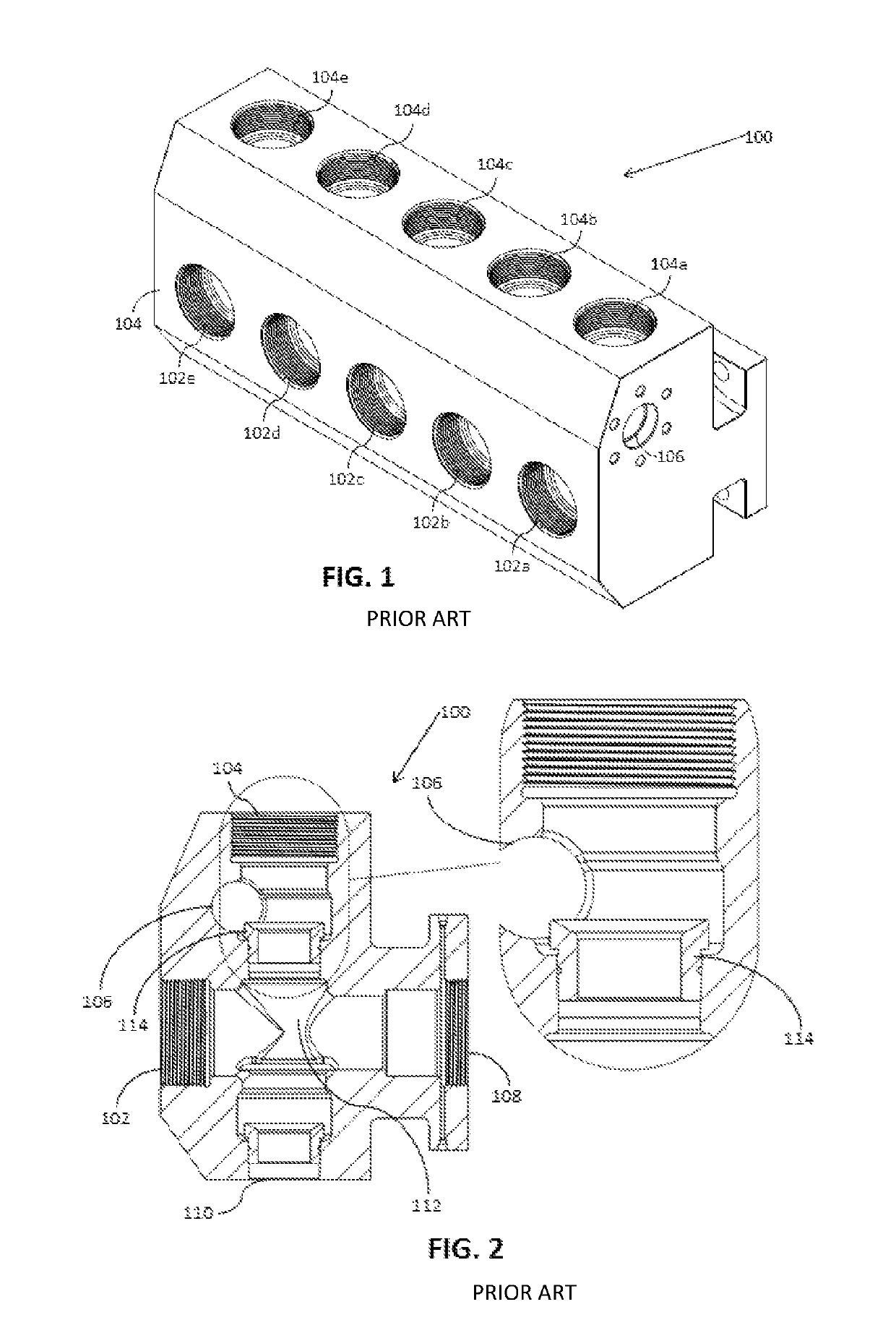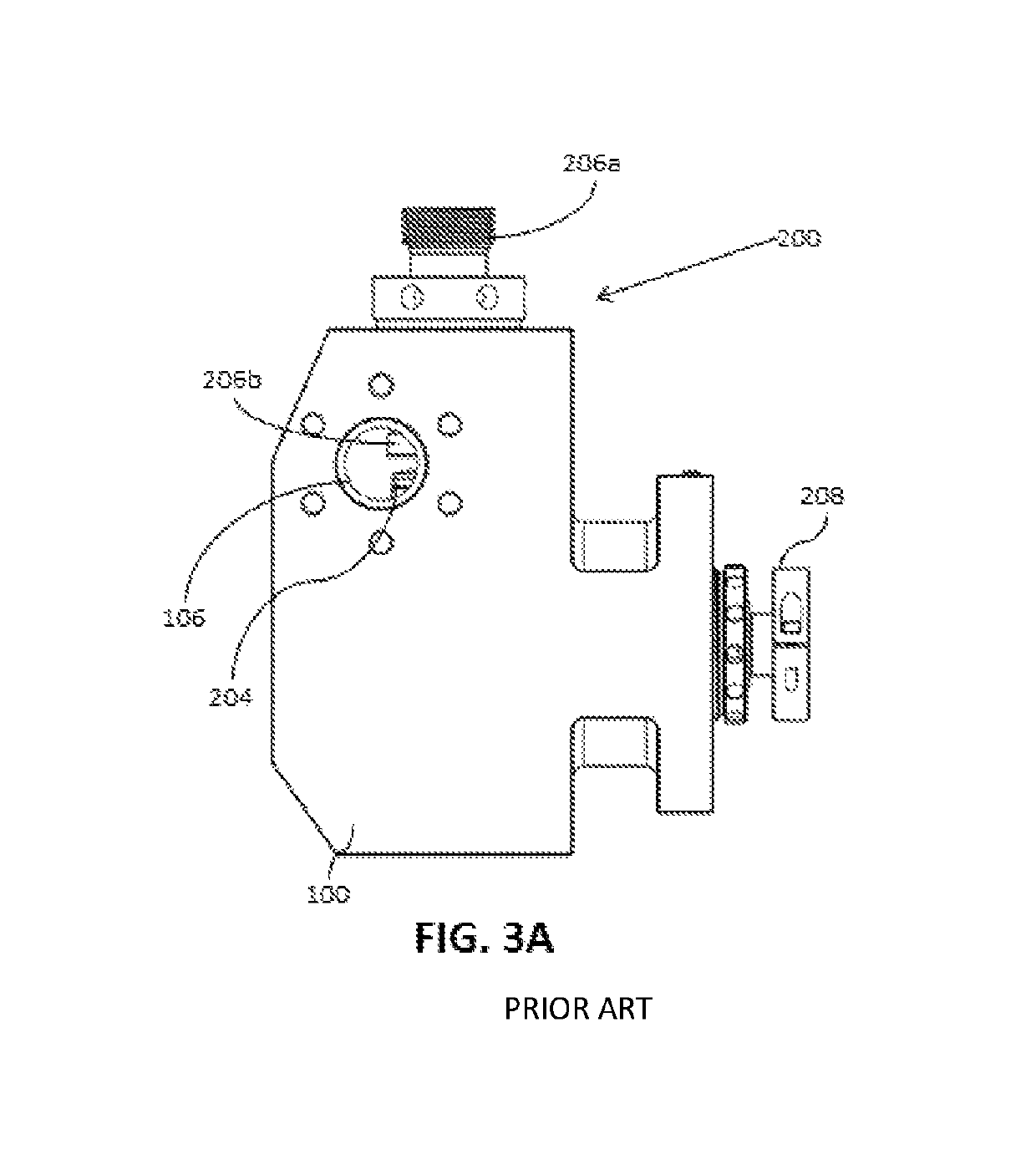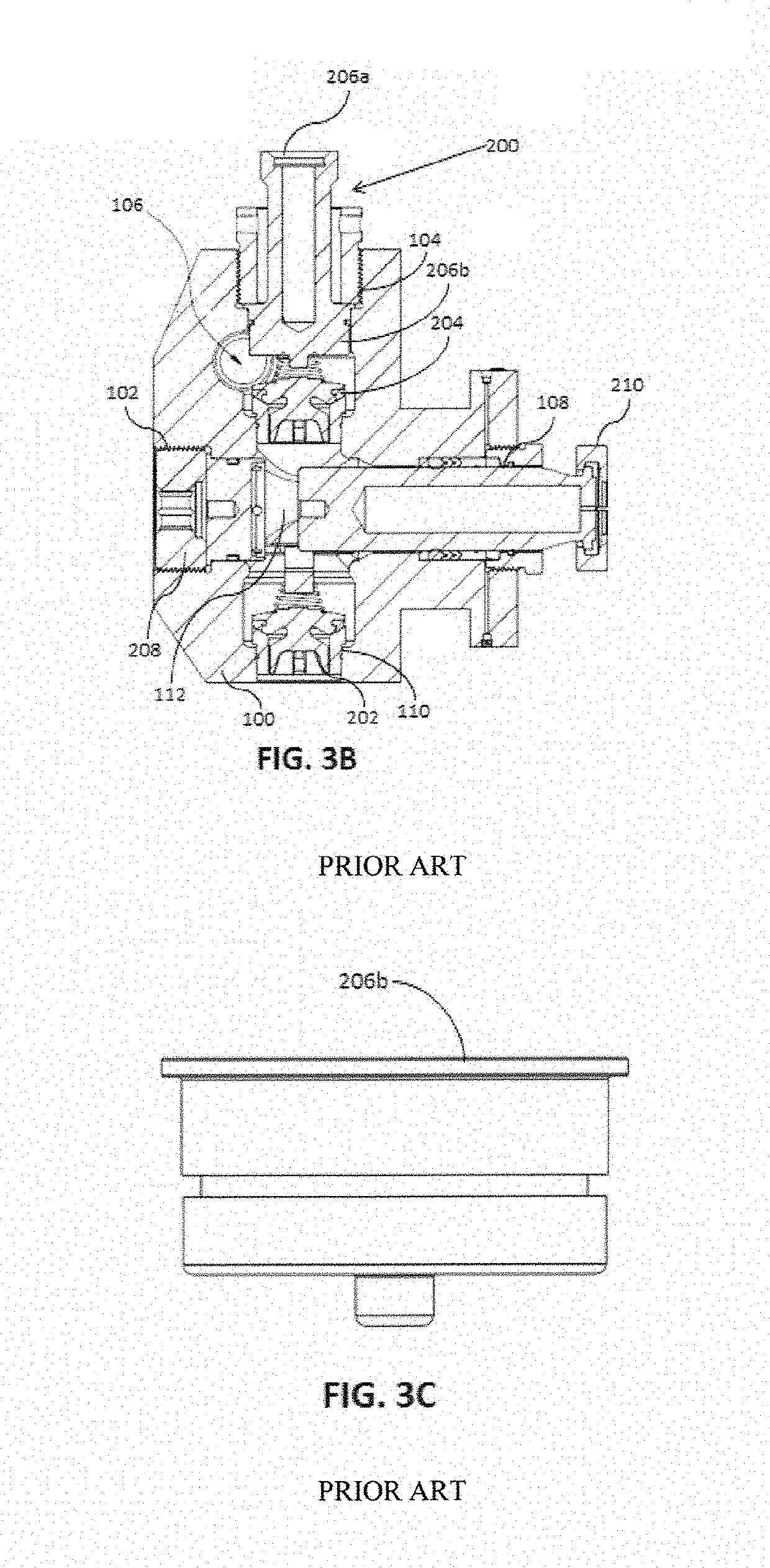Discharge cap and block for a fluid end assembly
- Summary
- Abstract
- Description
- Claims
- Application Information
AI Technical Summary
Benefits of technology
Problems solved by technology
Method used
Image
Examples
example
[0050]A conventional design and the improved fluid end assembly design were operated under the same conditions and compared for run times and cavitation activity.
[0051]8 redesigned fluid end assemblies were tested using Hercules brand pumps. The redesigned bore was 4.5″, the discharge cap was conical in shape and the decks were recessed. The fluid end assemblies and pumps operated for at least a 2 hour fracturing stage (also called a pumping time) at approximately 8000 psi. at the wellhole. 400,000 lbs of 100 Mesh fracturing sand was used; It was found that the Hercules improved fluid end assemblies had a life of about 750 hours average (average over the 8 pump assemblies); the Conventional fluid end assemblies had a life of about 300 hours average (average over the 8 pump assemblies). The inventive assembly operated longer without cavitation or pump failure compared to the conventional design.
[0052]During the experiments, the inventor was looking for reducing the differential press...
PUM
 Login to View More
Login to View More Abstract
Description
Claims
Application Information
 Login to View More
Login to View More - R&D
- Intellectual Property
- Life Sciences
- Materials
- Tech Scout
- Unparalleled Data Quality
- Higher Quality Content
- 60% Fewer Hallucinations
Browse by: Latest US Patents, China's latest patents, Technical Efficacy Thesaurus, Application Domain, Technology Topic, Popular Technical Reports.
© 2025 PatSnap. All rights reserved.Legal|Privacy policy|Modern Slavery Act Transparency Statement|Sitemap|About US| Contact US: help@patsnap.com



